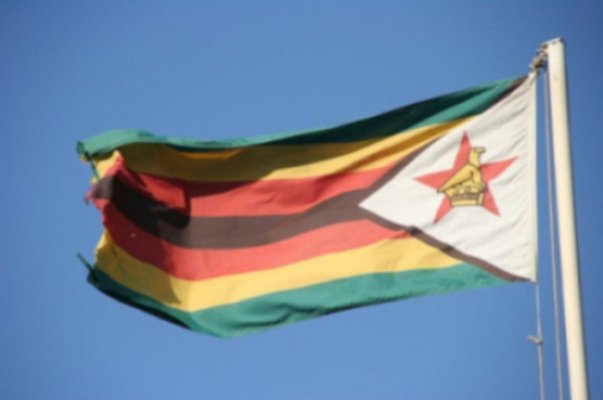Zimbabwe’s monthly rate of inflation fell for the fourth consecutive month in October amid growing exchange rate stability while the annual rate recorded its second straight retreat as tight liquidity due to a coterie of policy interventions anchored the key fundamentals, official statistics show.
The Zimbabwe National Statistics Agency (ZimStat) said month-on-month inflation in October 2022 was 3,2 percent, shedding 0,3 percentage points on the September 2022 rate of 3,5 percent.
Inflation depicts the pace at which prices rise, as such a fall in the rate does not necessarily signify falling prices.
This means that prices, as measured by the all-items Consumer Price Index (CPI), increased by an average rate of 3,2 percent between September 2022 and October 2022. The Treasury has projected the monthly rate to close the year even lower at 3 percent.
“The month-on-month Food and Non-Alcoholic Beverages inflation rate stood at 3,1 percent in October 2022, gaining 1,4 percentage points on the September 2022 rate of 1,7 percent.
“The month-on-month non-food inflation rate stood at 3,2 percent, shedding 2,0 percentage points on the September 2022 rate of 5,2 percent,” ZimStat said.
According to ZimStat, on a year-to-year basis, annual inflation slowed to 268,8 percent in October from 280,4 percent in September and 285 percent in August 2022.
Zimbabwe’s inflation trajectory reflects the positive impact of the series of interventions both fiscal and monetary authorities have instituted in the past few months. These included the bank policy hike by the Reserve Bank of Zimbabwe (RBZ), from 80-200 percent, to stymie speculative borrowing.
A number of companies were borrowing at cheap interest rates to speculate in the currency and equities markets in a manner that hurt the domestic currency, which has depreciated from $2,5/US$1 in February 2019 to $632/US$1 on the formal market or $850/US$1 on the black market.
The central bank also increased statutory reserves, which determine the funds available to banks for on-lending, to squeeze the flow of excess liquidity into the market, helping to entrench exchange rate and inflation stability.
Authorities have indicated they will maintain a high-interest rate regime through 2022 and will only review them down if they notice a significant fall in inflation, which is not peculiar to Zimbabwe but a global phenomenon responding to dynamics caused by the war in Eastern Europe.
Further, the RBZ introduced gold coins in September as an alternative investment instrument, which helped to divert some of the excess liquidity in the market to engender exchange rate stability, which was the biggest factor in driving an inflation resurgence.
From August this year, Treasury demanded that all Government suppliers and contractors set prices (value for money audits) in line with market trends based on the willing buyer-willing seller exchange rate to avoid overpricing, which saw unscrupulous businesses pocket super profits they used to buy forex and drive Zimbabwe dollar depreciation.
Finance and Economic Development Minister Professor Mthuli Ncube expects annual inflation to average 166,7 percent this year, and hopes to contain monthly inflation to 3 percent by year-end.
Economist Tinevimbo Shava said, “The review and enhancement by the Government of its procurement processes and practices to ensure value for money have resulted in the stability of the exchange rate and a decline in inflationary pressures, so this is not a surprise.”
Another economist, Namatai Maeresera said, “The country has been on a monetary policy tightening stance and these are the benefits of such activities, the gold coins, high-interest rates, and the Government (contracts) payment stance have led us to this point and all should be commended.”
Bankers and industrial companies have been calling for interest rate cuts to enable companies to finance their operations, but quickly reversing this could spell a quick relapse into rampaging inflation.
Last week Minister Ncube said, “I think once we see that downtrend in month-on-month inflation being sustained, maybe over a three- to four-month period, then we can begin to think about lowering interest rates. But for now, the tough monetary-regime stance and also the tough fiscal stance stand.
“That’s what it takes to bring stability and bring things under control.”
Economist Dr Prosper Chitambara said the interest rates were at the right level and the Treasury was right on the need to ensure a sustained period of stability until “we think of a policy rate cut”.
He, however, acknowledged that high interests will come with consequences such as failure to meet growth targets.
Dr Chitambara also noted that higher interest rates may push up non-performing loans (NPLs), but he insisted, “it is also imperative to strike a balance and determine an optimum interest rate policy that complements the policy measures that have been put in place.”
Economist Prof Tony Hawkins argued that the interest rates were at optimal levels and the Treasury is holding the correct line. According to him lowering interest rates will see the parallel market running away again and more money-searching value
“In the end, this will perpetuate financial disintermediation and probable market bubbles on the stock market, as customers will look for alternative, non-bank based, investment options,” Prof Hawkins said.






































